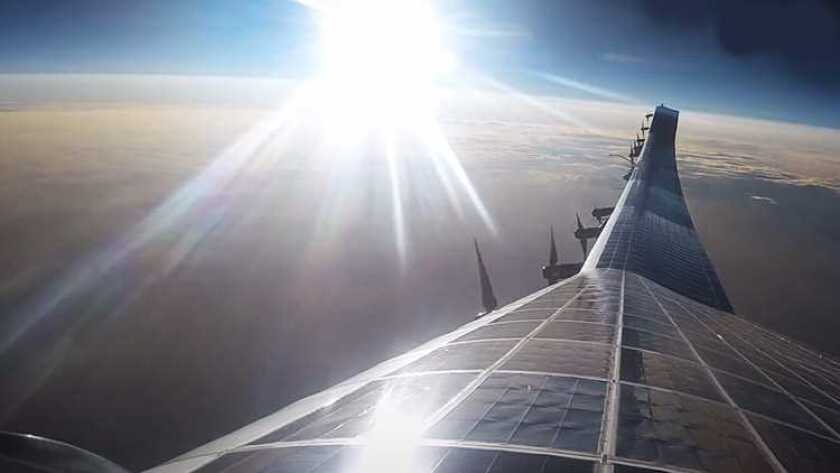The flight was the latest stage in HAPSMobile’s project to develop high-altitude platforms that could act as flying celltowers to cover remote regions.
Junichi Miyakawa, CTO of SoftBank and president and CEO of HAPSMobile, said: “We once again moved one step closer to our goal of building a base station that floats in the sky solely on solar energy.”
The aircraft, called Sunglider (pictured), flew at more than twice the height of Everest, which is 8.8km high. It successfully reached the stratosphere just three years since its development began. It successfully completed its flight on a pre-flight battery charge and solar energy during the flight.
According to video posted on YouTube by HAPSMobile, Sunglider took off before dawn. The company has not said how flights entirely at night will be powered.
The test flight lasted a total 20 hours and 16 minutes, with five hours and 38 minutes spent in the stratosphere, facing winds of 30 metres a second and at a temperature down to –73°C.
Loon, a sister company of Google in the Alphabet group, provided the 4G communications platform. Earlier this year Loon launched a balloon-delivered 4G service in parts of Kenya in association with Telkom Kenya.
According to SoftBank, members of the Loon team and from AeroVironment, which is a shareholder in HAPSMobile, made smartphone calls via Sunglider to colleagues in Japan. Connectivity continued for 15 hours of the flight, using MIMO –multiple input, multiple output – technology.
“While there is still much room for improvement, we will continue to work toward realising our dream,” said Miyakawa.
The service link used a 5MHz band of the 700MHz spectrum band for this test. In addition to an outdoor environment, the video call test was successful indoors.
Loon’s CEO Alastair Westgarth said: “This successful test represents yet another step to develop a new layer of connectivity based in the stratosphere. It is also an important step in our ongoing strategic partnership with HAPSMobile. By developing technologies to harness the opportunity of the stratosphere, we are making progress toward our shared goal of connecting unconnected and under-connected populations around the world.”
Vint Cerf, Google’s chief internet evangelist, who was on the video call via Sunglider, said: “That floating, stratospheric base station connected a mobile phone to the internet where a four-way, high resolution video conference ensued. This technology holds great promise for the future of connectivity, especially as part of efforts to expand internet access to places that don’t yet have it.”






